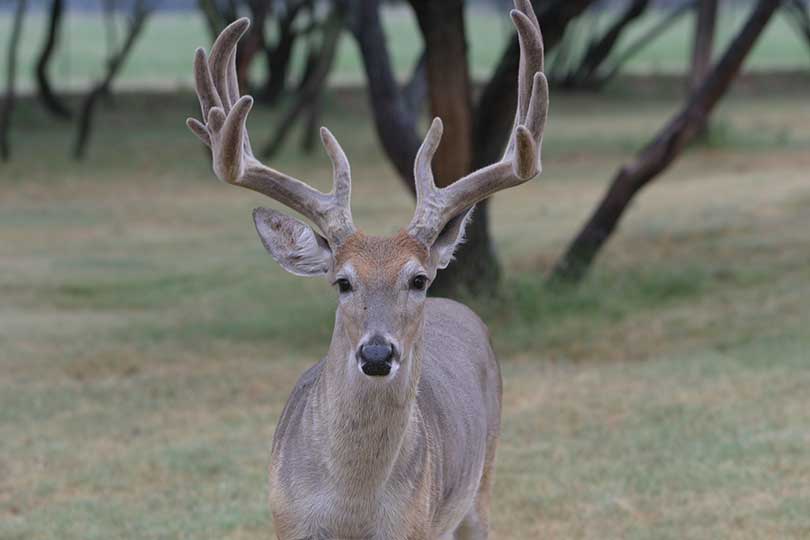There are reports of some big deer taken by Texas hunters in the first 10 days of archery season, although hunting has been generally slow in some parts of the state because of warmer weather, according to a leading state biologist.
Alan Cain, the white-tailed deer program leader for the Texas Parks and Wildlife Department (TPWD), told the Texas Farm Bureau Radio Network that there appears to be quality over quantity right now.
“This year is starting off pretty good. A little slow as far as numbers, but that’s to be expected with it being a little warm in the early part of archery season. The hunters out there, though, are seeing some good animals,” Cain said. “I know of a big typical that was harvested in Webb County that grossed around 198 inches Boone and Crockett, and we’ve been hearing some reports from the eastern part of the state of some good quality bucks, solid deer in that 130- to 140-inch type range. So I expect it to be a great season.”
Cain said there are a lot of one-and-a-half to two-and-a-half-year-old bucks in the white-tailed deer population because of good fawn crops in the last couple of years.
“Hunters need to remember that, especially if they’re looking for those older-age class bucks. They might want to wait a bit and see what shows up,” he said. “The cooler weather will be real nice and enjoyable, and it will help get deer up and moving around. Rut will be starting in some areas of the state towards the latter part of October.”
TPWD’s features research on the white-tailed deer rut on its website at https://tpwd.texas.gov/huntwild/hunt/planning/rut_whitetailed_deer/. Biologists who designed the breeding study knew there were distinct rutting periods in different parts of the state. They picked 16 study areas which were typical of the different ecological regions. The areas represent north-south or east-west distinctions. The earliest and latest dates for breeding in each ecological region and a “peak” breeding date for each study area are included on the site. Graphs show the percent does bred during weekly periods throughout the breeding season.
In Texas, the breeding season for white-tailed deer is fairly predictable from year to year. Within a specific area, habitat conditions not only affect fawn survival, but can affect the timing of breeding. A doe in poor condition or a young doe may not breed until late in the season. A doe may be attractive to bucks for about five days, but may be willing to breed for a period of only 24 hours. If the doe is not bred during her first cycle, she will generally come into heat again about 28 days later.

